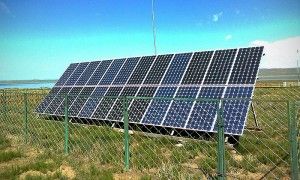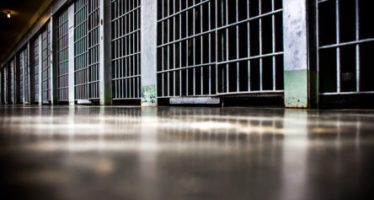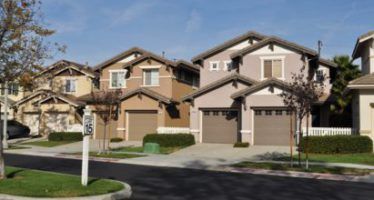$2 Billion Solar Rebates Program Broke
By KATY GRIMES
California legislators are pushing a bill through the system for a bankrupt solar subsidy program, despite a $200 million shortfall. And while the large shortfall would make most subsidy beneficiaries go belly-up, California legislators seem willing to make sure the debts are paid — by utility ratepayers.
The definition of “bankrupt” is “unable to pay debts.” But with the California Public Utilities Commission approving rate hikes, it seems that the debts will indeed be paid — by utility ratepayers.
In the Senate Energy, Utilities and Communications committee, legislators entering the hearing room at the Capitol on Tuesday morning immediately sought out lobbyists before the hearing began. Quiet talks took place and information packets exchanged hands demonstrating prearranged agreements and harmony on the issues. The lobbyists were energy company lobbyists and supporters of green technology — two groups that haven’t always seen eye to eye, unless both are benefitting financially.
Several of the bills heard by the committee were about the recent PG&E gas line explosion in San Bruno last September, with proposals for additional industry regulations.
But the issue dominating the hearing centered around San Diego Democratic Sen. Christine Kehoe. She was armed with a bill, SB 585, sponsored by the Solar Alliance. It would extend the solar subsidies and incentives provided to commercial businesses, government entities and homeowners in the state seeking to add solar systems to buildings, property and homes.
The California Solar Initiative (CSI) is a $3.3 billion program paid for by utility ratepayers. It then provides the incentives for solar systems. Kehoe said that the CSI program has created 36,000 solar jobs in California.
However, the CSI program is suffering a shortfall — a very serious shortfall of $200 million.
Instead of abandoning the program because it is upside down, Kehoe is seeking to extend it, and have ratepayers foot the bill. “It’s essential to extend the program for ratepayers to fully realize the benefit,” said Kehoe.
Kehoe Solar Pork
The California Center For Sustainable Energy, a non-profit organization “dedicated to Greening Your World,” located in Kehoe’s district, is the administrator for San Diego Gas and Electric’s CSI program. “Our role as administrator of the program really puts us in touch with the marketplace,” said Andrew McAllister, the program director. “And San Diego is the most solar city in the nation.”
McAllister, who testified with Kehoe, said that is it vitally important that “California” becomes a brand name for solar. McAllister said the solar incentive program has gone to one-half public sector and one-half private sector. “The public sector side is very important,” said McAllister.
McAllister also explained that the incentives, from now on, will be smaller because the larger incentives already were swallowed up by the big utility companies.
McAllister talked about “assessing market transparency and market consistency as the program moves forward,” suggesting that there may have been a problem with this.
In July 2010, the CPUC announced “three years into the state’s 10-year solar program, California is already 42 percent of the way towards its general program goal in the territories of the investor owned utilities.” But also last summer, the CPUC admitted that there would be no funding to meet the goals of the non-residential solar installations because the uilities had been given all of the money allotted to them, and more, by the PUC.
The CPUC voted to shift $40 million from the administrative budget for CSI to the non-residential program.
And the CSI incentive program paid larger incentives to government entities “because they are not eligible for the federal tax grants and credits.
Opposition
Representatives from the utility companies lined up to testify in support of Kehoe’s bill. But not everyone present was supportive.
“The residential ratepayer will take the brunt of the $200 million shortfall,” said Lenny Goldberg, representing the Utility Reform Network (TURN), which is made up of small ratepayers. Goldberg said that residential ratepayers cover approximately 50 percent of the collections, and when the CPUC allocated incentives to the residential, non-residential and government/non-profit sectors, in was inequitable. TURN argued that that if revenues are going to be collected from ratepayers, the revenues should be in proportion to the incentives received.
Sen. Alex Padilla, D-Pacoima, told Kehoe that the committee is “forced to take a look at what was the cause of the overuse of funds,” and asked that, before going forward, “take a look at the root causes” of the shortfall.
Edward Randolph with the PUC said that last summer they suggested a reduction of the incentive rate the government receives, and a transfer of the $40 million.
“I like CSI, but my area is having a taxpayer revolt over it and the tier system,” Sen. Jean Fuller, R-Bakersfield, said. She urged the PUC to change the program so that ratepayers don’t take the brunt of the shortfall.
Padilla asked Kehoe to address the shortfall problem before the bill makes it to the floor of the Senate. Then each member of the committee voted to pass the bill.
Related Articles
SB350 support hinges on cost vs. environmental protections
Looking at the results of the California Business Roundtable/California Manufacturing & Technology Association poll on Senate Bill 350, the new
Questionable practices at CA prisons criticized
After years spent under the glare of judicial scrutiny, California’s effort to clean up its prison system has run up against a
State Senate approves bill to revive Kelo-style redevelopment
California has moved one step closer to the return of redevelopment and the controversial power to seize private property through eminent





